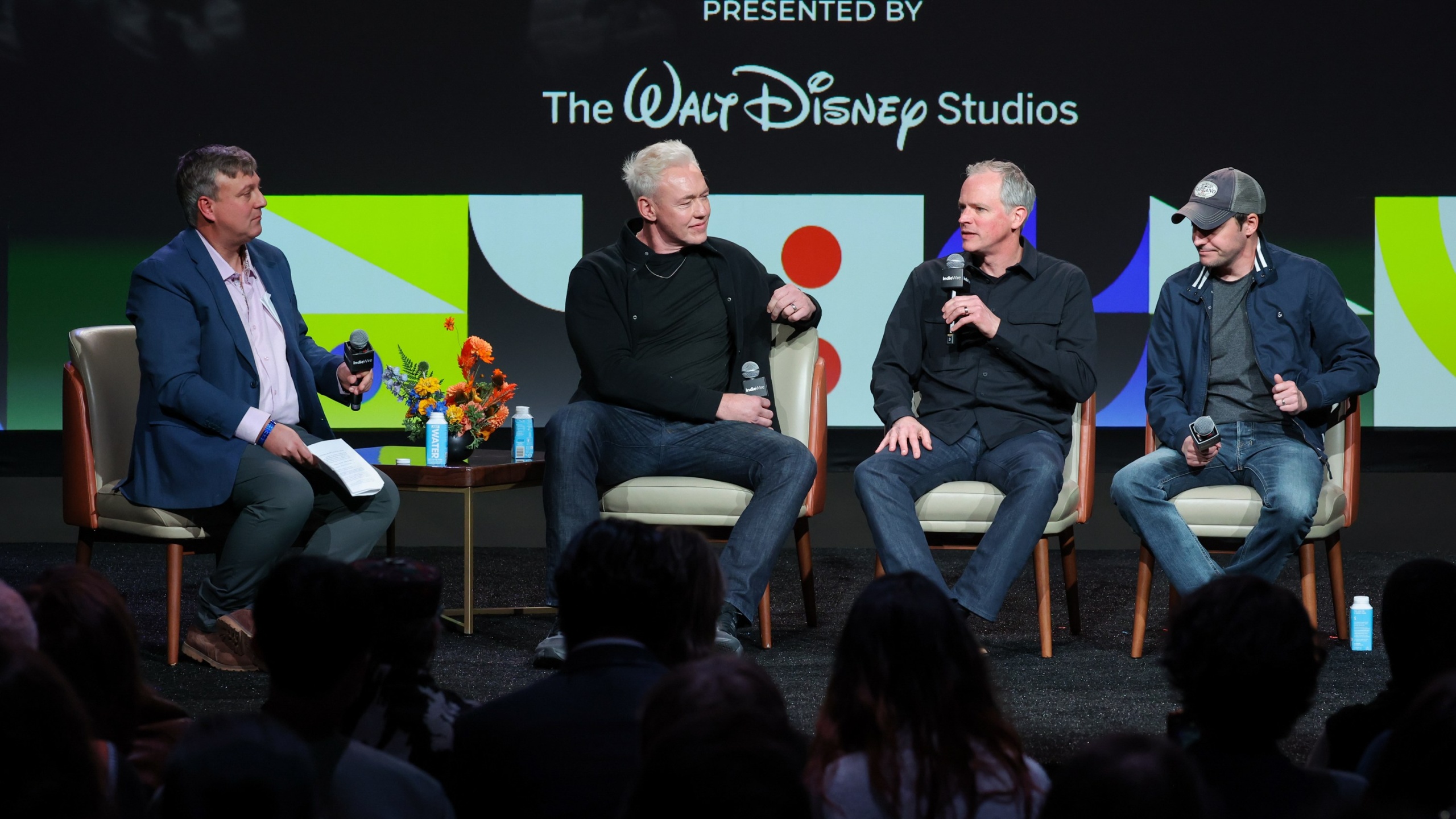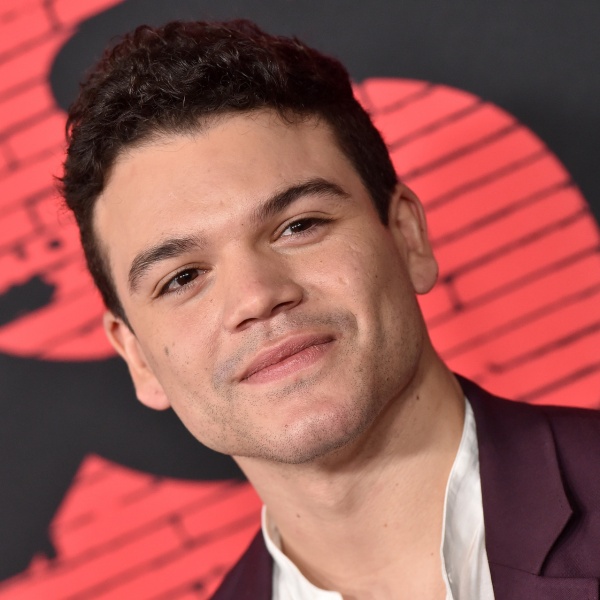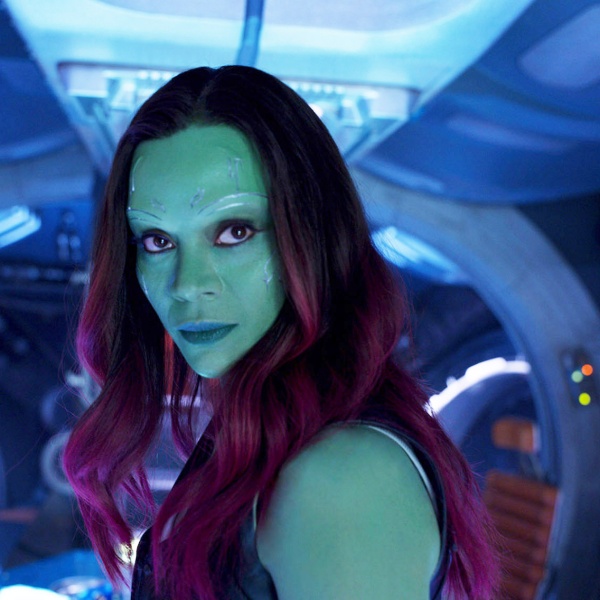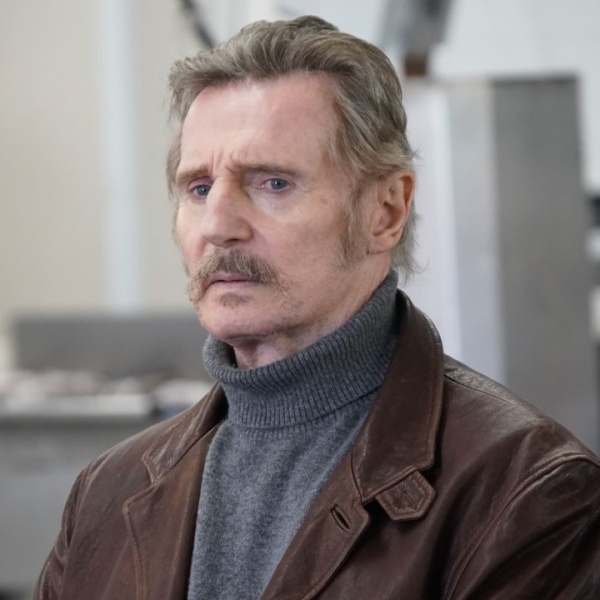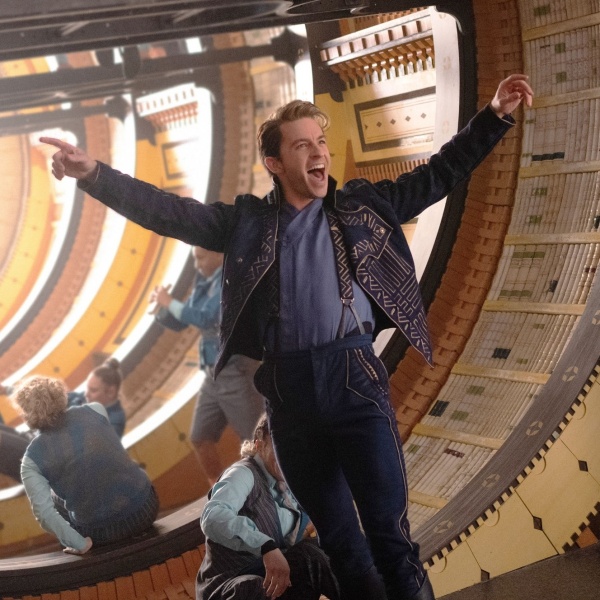“What a wonderful day!”
So says bonobo Proximus as he riles up his crowd of ape sycophants willing to do his bidding. It’s a key introduction to the character in this summer’s blockbuster hit “Kingdom of the Planet of the Apes” — and one that wouldn’t have had nearly as much impact without the careful detail that went into translating human actor Kevin Durand’s performance through motion capture technology.
On November 2 at Nya West in Hollywood, Durand, director Wes Ball, and Visual Effects Supervisor Eric Winquist joined moderator and VP, Features Strategy Chris O’Falt for a panel discussion at IndieWire’s inaugural Future of Filmmaking Summit. The chat, presented by Walt Disney Studios, took a deep dive on the technology used to expand this already legendary IP, while at the same time honoring what came before.
“We didn’t want to abandon the Caesar storyline,” said Ball in discussing the contributions of Rupert Wyatt, Matt Reeves, and Andy Serkis to the franchise. “That’s such a crucial part of this thing, so really the very beginnings of it was about how we come up with a new trajectory, a new little chapter, both aesthetically, we are going to shoot with a lot more light, and the idea of cutting 300 — we don’t ever say specifically — but around 300 years into the future to follow these new characters. It’s a younger group of apes this time and underneath all that, built on the foundation of what Caesar left behind, the kind of myth and the legend and all that stuff. And we really saw ourselves as trying to straddle two universes and that was the Caesar storyline that came before us and the 1968 original Charlton Heston movie.”
In reflecting the franchise’s narrative shift forward, Ball and Winquist also worked to continue the advancements in motion-capture technology that have taken place in the last two decades. Winquist told the Summit crowd that a lot of their work was informed by how James Cameron and Lightstorm moved the tech forward between the first “Avatar” and “Avatar: The Way of Water.”
“Back in 2006 through 2007 or so when they were capturing the first one, it was all about a single camera that was capturing the actor’s performances,” he said. “Fast-forward 10 years, we’re now using a pair of cameras and what that actual perspective gives us is depth. And from that depth, we can get a lot more precise read, 48 frames a second on what this guy’s face is doing. And what that really enables is just a greater fidelity of all the little ticks and nuances and stuff that go on, especially around the mouth, which is such a huge part in these films. The muzzle of the ape is just so flexible.”
Knowing Winquist had such control over what the final image could be, Ball put his focus on providing his actors with a space to ape-out in as realistic and dramatic a fashion as possible. For Durand, he was surprised by how much he was able to just perform rather than get distracted by the fakeness of it all.
“We initially thought, ‘Oh my gosh, this helmet with the camera and these Lycra suits with all these bulbs, this is going to be a real problem,’” said Durand. “You think, ‘This is so different’ and then within five minutes, you’re just connecting with your fellow actors in these environments.”
Elaborating on the new technology Weta Effects created for the film and how it allowed them to connect deeper with the performances, Winquist said, “[It] gave the animators a good foundation that was consistent across the entire movie, independent of who the animator was. That then allowed them to focus all of their energy and all their talent on looking at their ape and looking at what the actor was doing and going, ‘What am I reading? What’s the read? Emotional? What’s hitting me right now from that actor’s performance, and am I getting that from the ape yet or not?’ And if the answer is no, then we’re not done yet and we need to go figure out like, ‘Oh, I see. Maybe we just tweak a little bit of what the muzzle’s doing. Maybe just a little bit more on the brow’ and suddenly, like Wes is saying, the smallest little change can suddenly completely flip your read of a performance.”
Ball pointed out one instance of this when they were working on the main ape character, Noa, played by Owen Teagues. They’d been developing the model design for months and couldn’t seem to get it right, then finally Winquist and the team realized one of Teagues’ eyes was lower than the other, a fact they hadn’t input into Noa’s features.
“It’s like five millimeters lower than his other one,” Ball said. “And as soon as Erik and team put that into Noa, boom, it suddenly became real. It’s just little, tiny, subtle, imperceptible things that just all add up in this kind of effort to make something that feels real. It’s really amazing. I was shocked by how much work actually goes into making this story.”
Watch the full “Kingdom of the Planet of the Apes” panel above.
